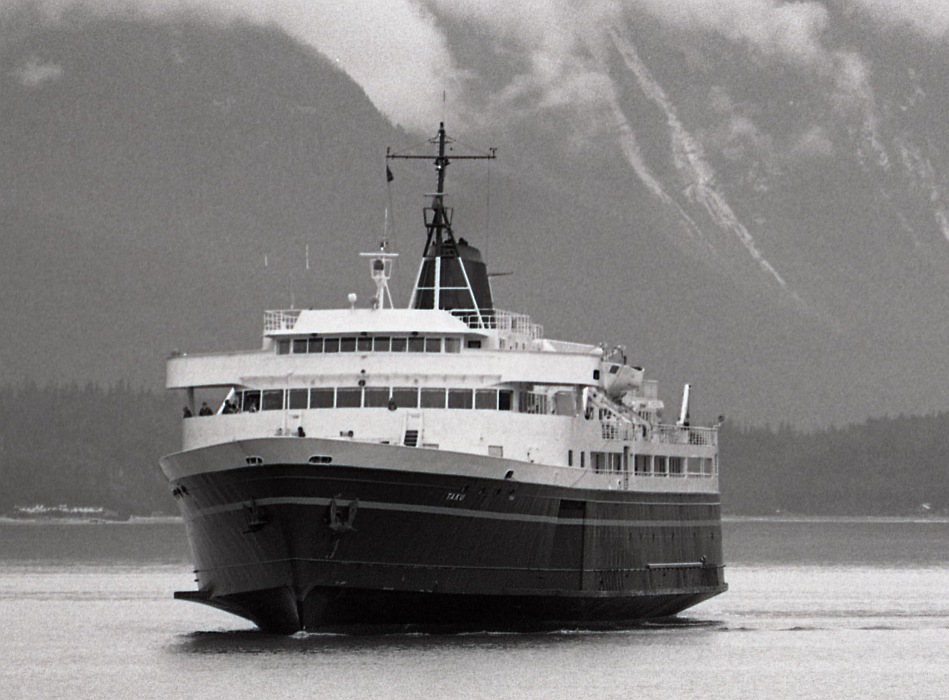
The ferry Taku will be tied up in Ketchikan next summer. Says DOT deputy commissioner Mike Neussl, “I don’t have the funding to run 11 ships.” (Photo by LCGS Russ/Wikimedia Commons)
Sitkans turned out in force last week (11-24-15) for a lunchtime brainstorming session to address the proposed ferry schedule, but the Department of Transportation couldn’t make any promises that things would improve.
Deputy Commissioner of Transportation Mike Neussl spent about two hours explaining the shortfalls in his budget next year, and listening to ideas from the more than 30 Sitkans in the audience.
Sitka will have only two ferry calls a week under the proposed summer schedule for 2016 — one northbound ship, and one southbound. In 2015, Sitka had a total of eight ferry calls a week, four ships in each direction.
Neussl explained that his budget has been cut by nearly $15-million dollars next year — part of cuts across the board in the Department of Transportation — and that he simply couldn’t keep 11 ships in service on the reduced funding.
He said that the current strategy at the Marine Highway System was to maintain service to all ports, at reduced levels, rather than cut any runs out altogether.
But some in the audience thought this was where the marine highway should start looking for savings. Barb DeLong:
“I just think a lot of people use that in the wintertime — or whenever — that don’t necessarily go all the way to Bellingham. If it comes down to that — and I wouldn’t want to be shot for saying this — but I almost think that our Southeast connections are more important to us in Southeast than going all the way to Bellingham.”
Neussl responded that eliminating redundancy — or eliminating ferries that covered routes served by roads — made sense. However, Canada’s restrictive border policies regarding firearms and pets were among the more compelling reason to keep the mainliners running within US ports.
He also emphasized that the marine highway system has a service component; it was important to make runs to Pelican and Tenakee, for instance, even though the passenger revenue didn’t always justify the costs.
Service was a consistent theme of the meeting. Sitka High student Colin Baccioco said sports teams and other student activity groups would pay more for better ferry service, as long as it remained economical compared to air fare.
Superintendent Mary Wegner said the reduced ferry service would affect how many students could afford to participate in extra-curricular activities.
“These co-curricular activities are critical from a student’s point of view, as well as an adult point of view. We also have a school board activities committee that’s been meeting with coaches. The number one thing they say is that ferry service is really impacting equity and participation.”
Mayor Mim McConnell urged caution on increasing rates too much, because of the economic strain it would place on Sitkans. But she would accept some increase “as long as it meant improved service.”
Neussl said that the marine highway had already made significant cuts: The on-board bars are gone, so are travel agent commissions, the Taku has been tied up and the system is looking at retiring other ships, and it’s imposed cancellation fees on large commercial shippers.
But, like the overall state budget, cuts alone don’t even come close. “We’ve kept service to every port,” Neussl said, “but it’s bleak.”































